Many visitors to this blog reach it using the internet search term “Tokyo neighborhood map” or “Tokyo area map”. Tokyo is a vast city, and any neighborhood map of Tokyo will either be overly detailed or hopelessly incomplete. This page is a list and accompanying map of various Tokyo neighborhoods I have visited, explaining what makes each of these neighborhoods distinctive.
But first, let’s start with a map of Tokyo’s 23 wards, which is often what people mean when they say “Tokyo” (as opposed to the Tokyo-to 東京都 metropolis, which extends to the west and includes 26 cities as Tachikawa and Hachioji).
Tokyo’s 23 “special” wards 特別区 tokubetsu-ku:
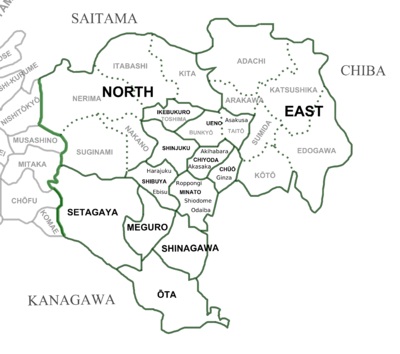
And also this hand-drawn map I still haven’t finished:

“Central Tokyo”: some refer to Tokyo’s central 5 wards (“toushin 5-ku”) as:
- Chiyoda-ku
- Minato-ku
- Chuo-ku
- Shibuya-ku, and
- Shinjuku-ku,
Others further refine “central Tokyo” as Chiyoda, Minato, and Chuo-ku.
In addition to the neighborhoods described in this post, you may also want to visit the tokyo files: maps, which includes maps covering various Tokyo neighborhoods.
A map of the neighborhoods described below:
See also: Overview map of Tokyo, which provides a very nice super high-level overview of the city’s main features.
Am I missing one of your favorite neighborhoods? Please let me know in the comments section!
IN TOKYO
Akasaka /Akasaka-mitsuke: this neighborhood sits on the edge of an old imperial-era moat; the overpass that now passes through here is a defining feature. See: Times have changed: Akasaka Mitsuke (1949, 1963, 2013) 赤坂見附 交差点

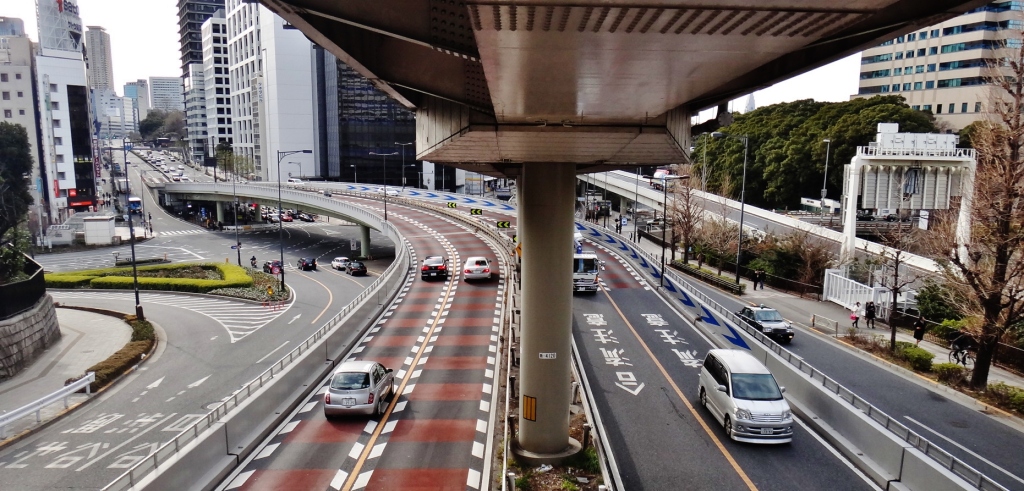
Akihabara: Electronics, otaku おたく / オタク, and maid cafes メイド喫茶 / メイドカフェ.
Asagaya 阿佐ヶ谷: A laid back area with cheap eats and shopping, and a good brewpub: Beer Dojo Asagaya 阿佐谷麦酒道場, plus “Violin” , an exceptional classical-music cafe.

Asakusa 浅草: traditional entertainment district and home to the popular Senso-ji temple. Senso-ji temple, Asakusa, 1956:

Atago 愛宕 / Kamiyacho: Home of Atago shrine, situated on the tallest point in Tokyo’s 23 wards, and former home of NHK and Tokyo’s first radio station. Now also home to the Atago Green Hills 愛宕グリーンヒルズ pair of Mori buildings.
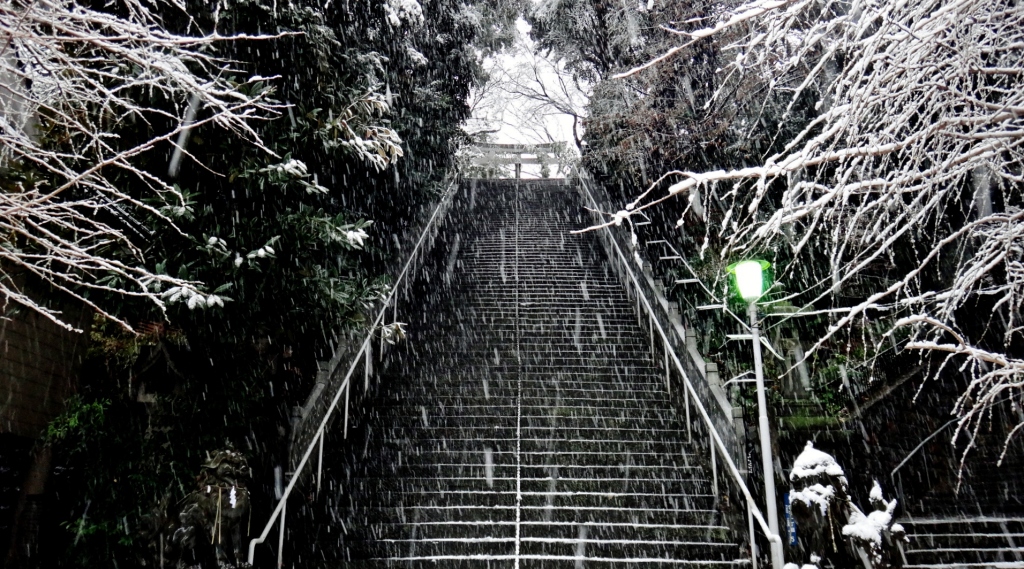
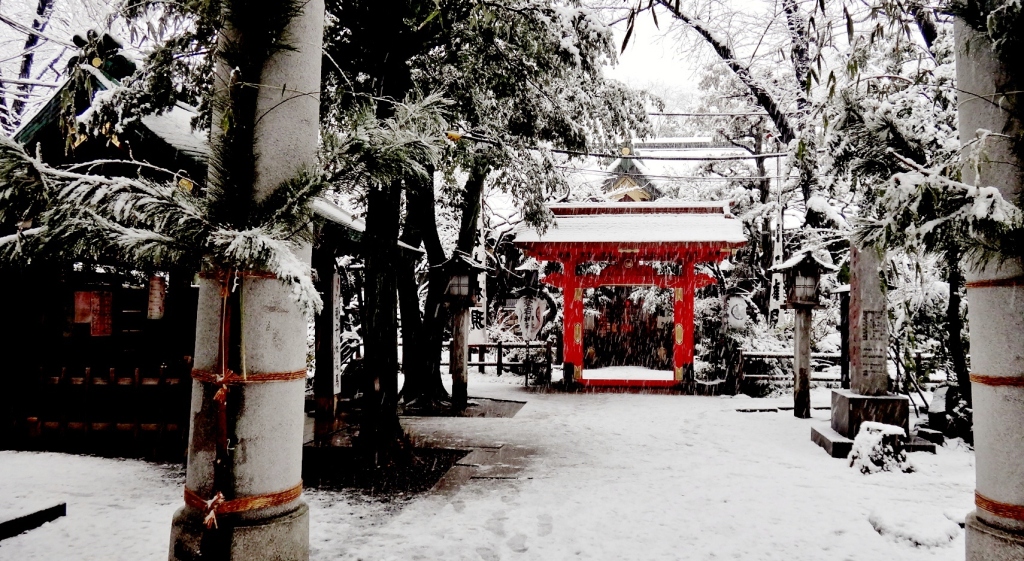
Azabujuban 麻布十番: just down the hill from Roppongi Hills, this is a fancy neighborhood with a pleasant shotengai (although shorter, it bears some resembklence to Yokohama’s Motomachi). Also famous for the incredibly long walk required to change between the Namboku and Oeda subway lines at Azabujuban Station. Azabujuban is the ‘commercial’ sister to the neighboring residential Motoazabu.
Chitose-Karasuyama: A nice, typical small but lively station area on the Keio Line. Home to the ghost-town remains of a post-war danchi 団地 public housing project. (See: Ghosts of Showa: the Karasuyama apartment complex, gated communities, & the fight for Tokyo’s soul)

Daimon 大門: this merges into Hamamatsucho, but it has character of its own, owing to the large gate that gives this neighborhood its name; the scene of Tokyo Tower rising behind Zōjō-ji temple 大本山 増上寺 is a sight to behold. (The Hakone Ekiden running race passes right in front of this gate).


Denenchofu 田園調布: Japan’s first “garden city”, it is currently one of the most desirable locations in Tokyo for upscale, suburban living with larger homes and lots (while still having access to good public transportation).


Dogenzaka 道玄坂: aka “Love Hotel Hill“, on the slope not too far from Shibuya Crossing.
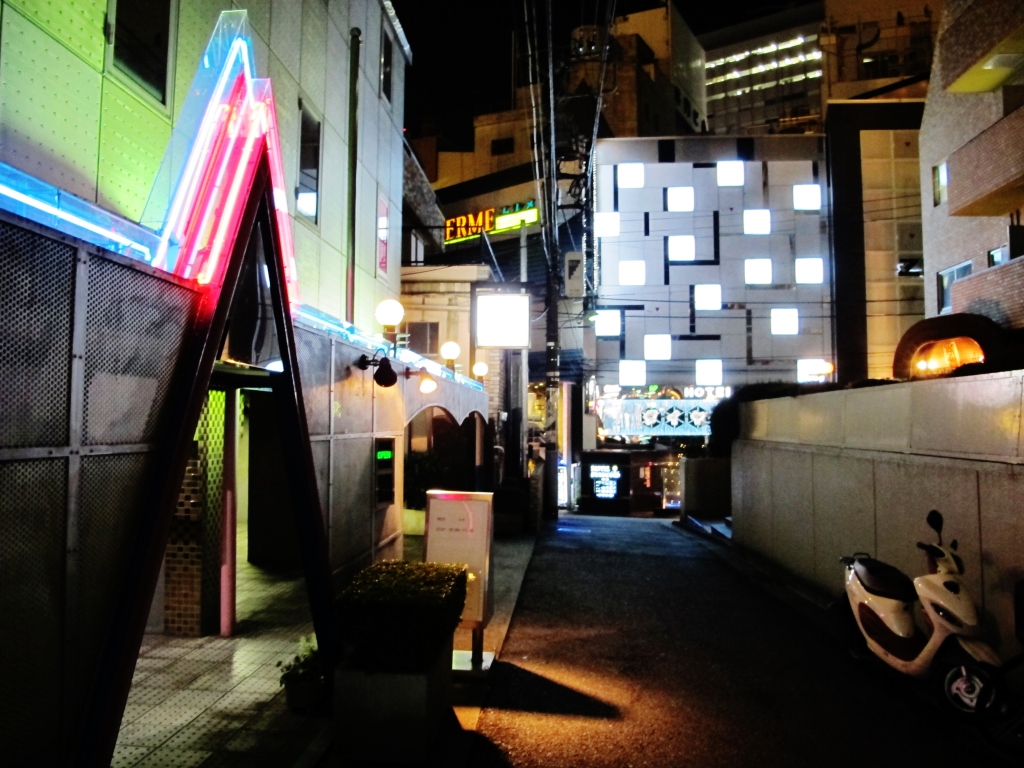

Ebisu 恵比寿: Popular with many visitors. It’s not a foreign ghetto like Roppongi, and it’s not as huge and crazy as Shibuya and Shinjuku. Perhaps the greatest all-around neighborhood in central Tokyo because it includes station-based shopping, nearby restaurants, and quiet side-streets near a narrow river, such as here (map). Below: Octopus slide and public toilet in an Ebisu park:

Edogawabashi 江戸川橋: Beautifully situated on the Edogawa River 江戸川 is Edogawa Park, and a 12-minute walk brings you to the spectacular St. Mary’s Cathedral. Edogawa Park map; nearest station: Edogawabashi Station 江戸川橋駅 (Yurakucho Line)
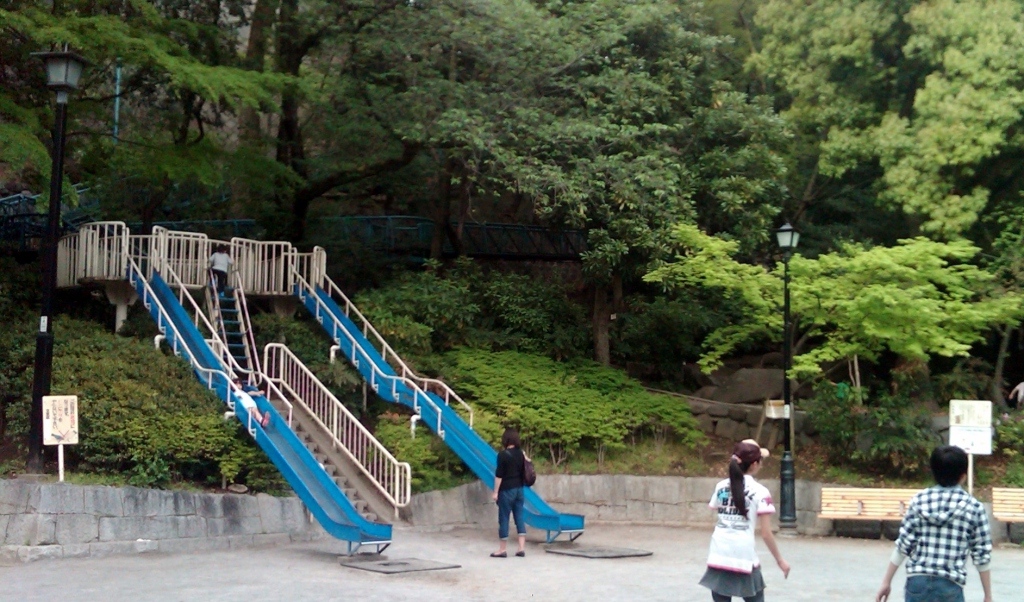
Edogawa-ku: this Ward to the far east of Tokyo includes such neighborhoods as Shibamata, Koiwa, Takasago, and Kanamachi.
Futakotamagawa 二子玉川: Popular spot for sitting by the river.
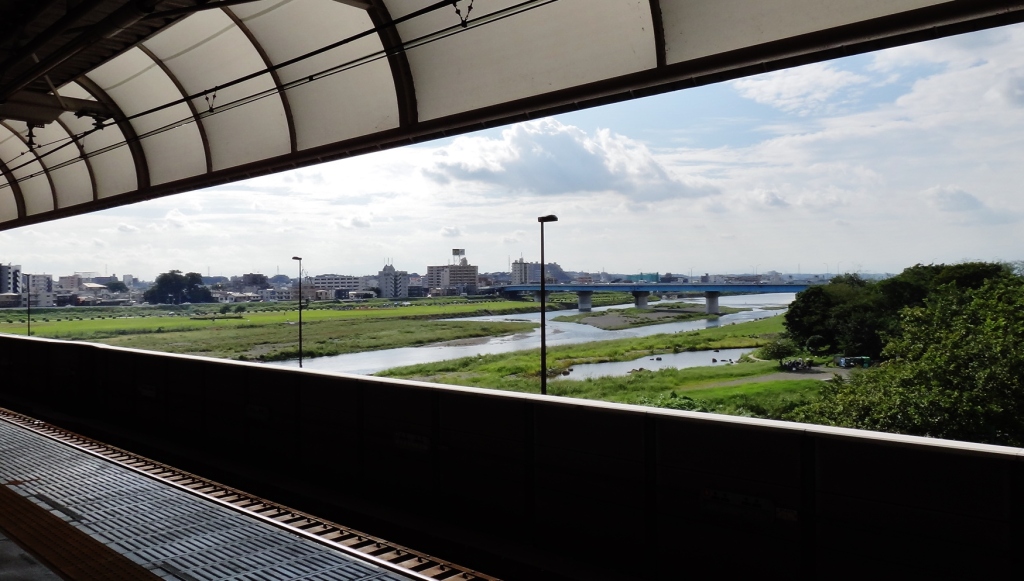
Ginza 銀座: The legendary upscale shopping district. The 5th avenue of Tokyo. That’s basically an insult to the Ginza. In addition to the allure of Ginza’s high-end shopping today, Ginza’s has a rich history, as it was known as “Bricktown” when, following a large fire in 1872, the government engaged the services of foreigners to rebuild the streets with fire-resistant brick instead of the dominant wood/paper-based construction of the era (source).

Gotanda: Has a somewhat old-fashioned, salaryman feel. And a nice little park by the river where you can catch a glimpse of the elevated Ikegami Line leaving the station.
Gotanda Fureai ふれあい Waterside Square 五反田ふれあい水辺広場 (map).

Hamamatsucho 浜松町: nothing glamorous here, just a decent after-work salaryman area without some of the seedier elements(if there are any love hotels or massage parlours in this neighborhood, they are well-hidden); home to a branch of the Devilcraft pizza and beer chain. See: Best craft beer bars in Tokyo クラフトビール東京
Harajuku Station: Closest station for Meiji shrine and Yoyogi park, and the stunning Yoyogi National Gymnasium 国立代々木競技場.
Hibiya: This “neighborhood” is basically just Hibiya park, a nice sanctuary of green space in the heart of downtown Tokyo. The park often hosts festivals and concerts on the weekends in the warmer half of the year.
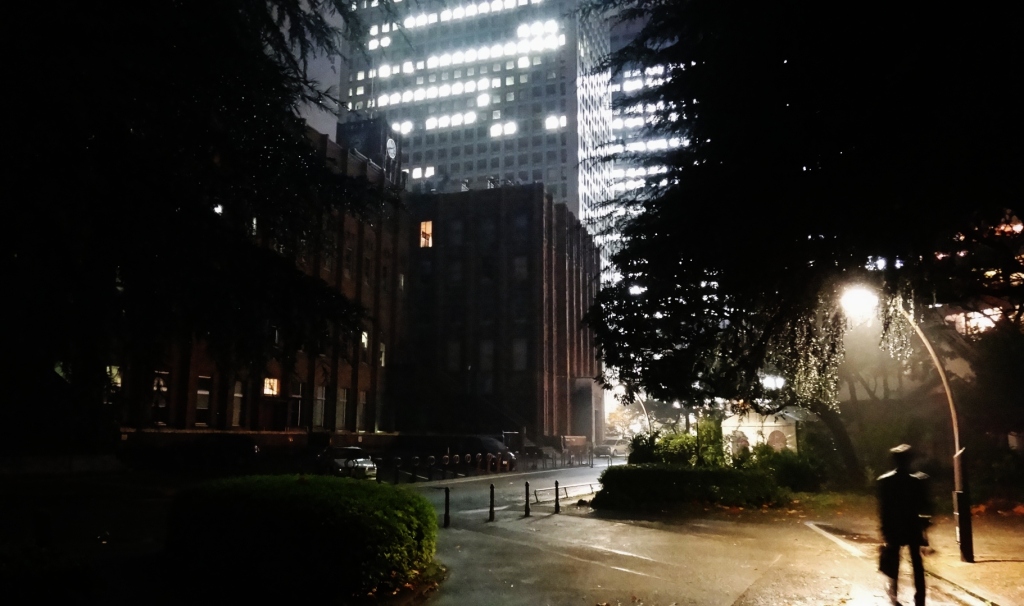
Hiroo 広尾: Quiet, popular residential area for expat families.
Hongo 本郷 / Todai 東大: Hongo is an area the encompasses most of University of Tokyo (Todai); just to the north is Todai-Mae Station, which also serves Tokyo University. Both of these areas are pleasant for walking but not overwhelmingly interesting for foreign tourists; there isn’t the same sense of action and excitement as much of central Tokyo, even though these areas are very close to the center of Tokyo.
Ikebukuro 池袋: Another large Yamanote line mini-city. Not as big a Shinjuku, but still expansive. See “Ikebukuro’s side streets offer up some craft beer gems“.

Ikegami: this quiet old neighborhood is home to the impressive Ikegami Honmon-ji 池上本門寺, perched high on a hill with commanding views of Tokyo Bay and Mt. Fuji. See: #3 on Where to see Mt. Fuji from Tokyo’s streets 東京から富士山が見える場所
Imperial Palace public grounds and walking path: this is the “eye” of Tokyo; see: Tokyo Imperial Palace jogging map
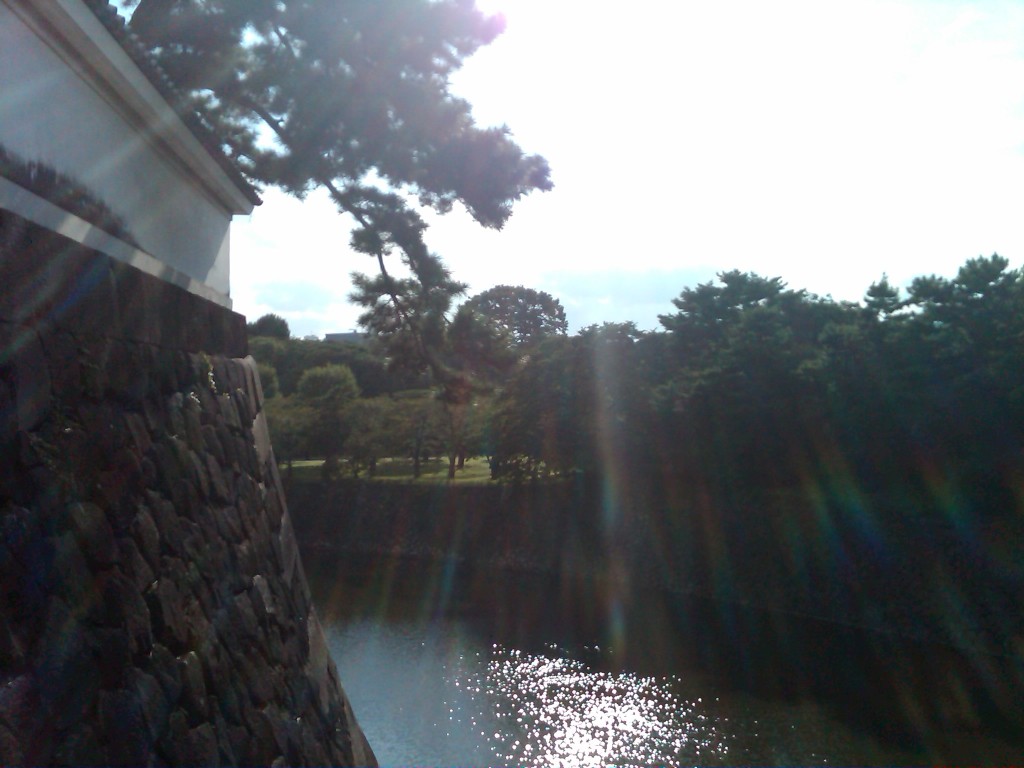
Ishikawadai: Local, residential area served by the small Ikegami line. Served as backdrop for the Ozu film, “An Autumn Afternoon” (1962).

Jinbocho/Jimbocho 神保町: Bookstores, students, and sports shops.
Jiyugaoka 自由が丘: Shopping and dining area. Very nice spot for a weekend afternoon. Described by many as being a good “date spot”. Not nearly as big and crazy as a place like Shibuya. Not as fancy (or crowded) as Omotesando, but feels slightly more upscale than Shimokitazawa. The following is the Kuhonbutsu River green road 九品仏川緑道 in Jiyugaoka:

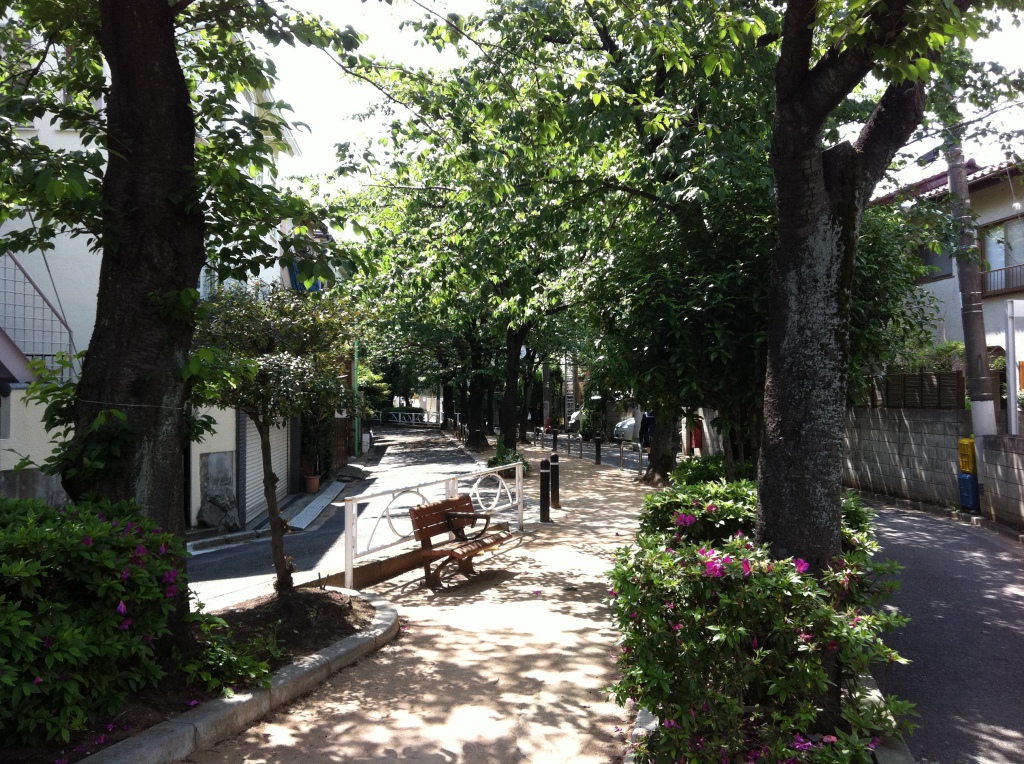
Kachidoki 勝どき / Toyomicho 豊海町: this area is reclaimed land, very flat, not lots of trees. Some buildings will have nice views of Tokyo or Tokyo bay, but the grid-like streets can be a bit monotonous. However, the canals that surround this neighborhood can be interesting. And from Kachidoki Station you can reach Shiodome Station in 4 minutes, crossing the famous Kachidoki Bridge. Kachidoki also has a kick-ass Denny’s. Toyomicho is adjacent to Kachidoki, is more industrial, and has no train stations.


Kagurazaka: Foreign restaurants, traditional Japanese restaurants, hills…feels removed from the hustle and bustle of Tokyo.
Kamata: a hub for southern Tokyo, and gateway to Haneda Airport
Kanamecho 要町: outskirts of Ikebukuro station, to the west; quiet, pleasant residential area. I like this area, because The Cat & Cask pub is nearby:
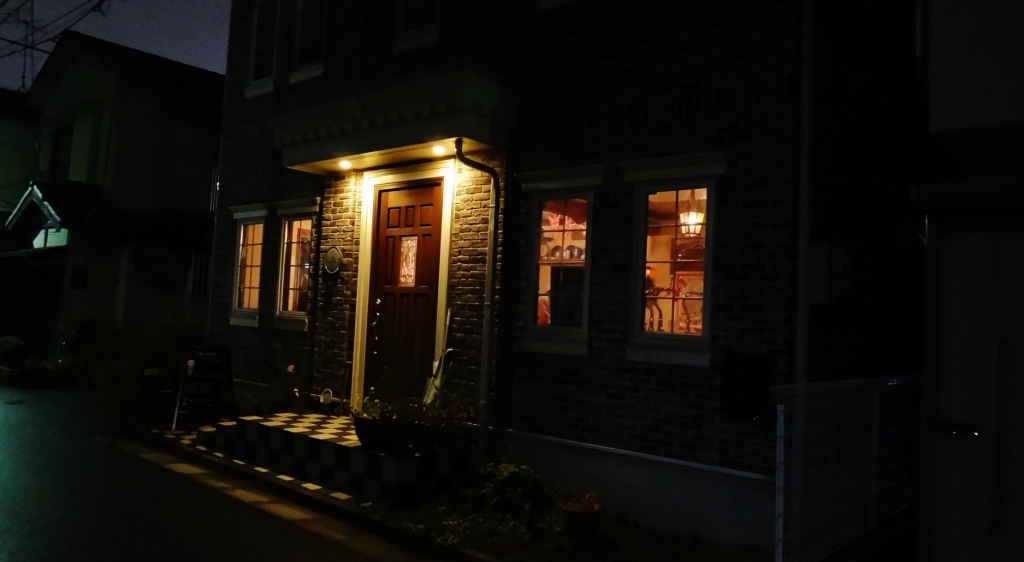
Kanda: Home to (the original?) Devilcraft deep dish pizza and craft beer restaurant.
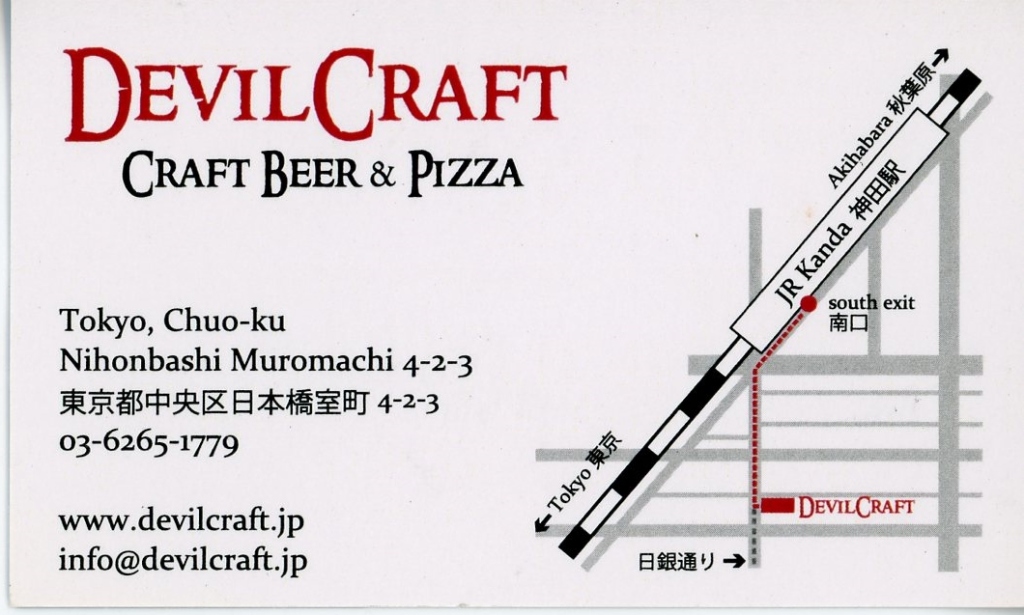
Kichijoji 吉祥寺: frequently named of of the best places to live in the Tokyo area by polls of Tokyo-area residents, it is west of central Tokyo but just 20-minutes to Shinjuku Station via the Chūō Line.
Kinshicho 錦糸町: a fairly large station and indicative of how large Tokyo is and how important train stations are in determining where shopping and dining are located. Here: Tokyo Sky Tree at dusk:

Koenji: Funky shopping street. I bought a pair of used Levi jeans for 700 yen ($7 dollars).


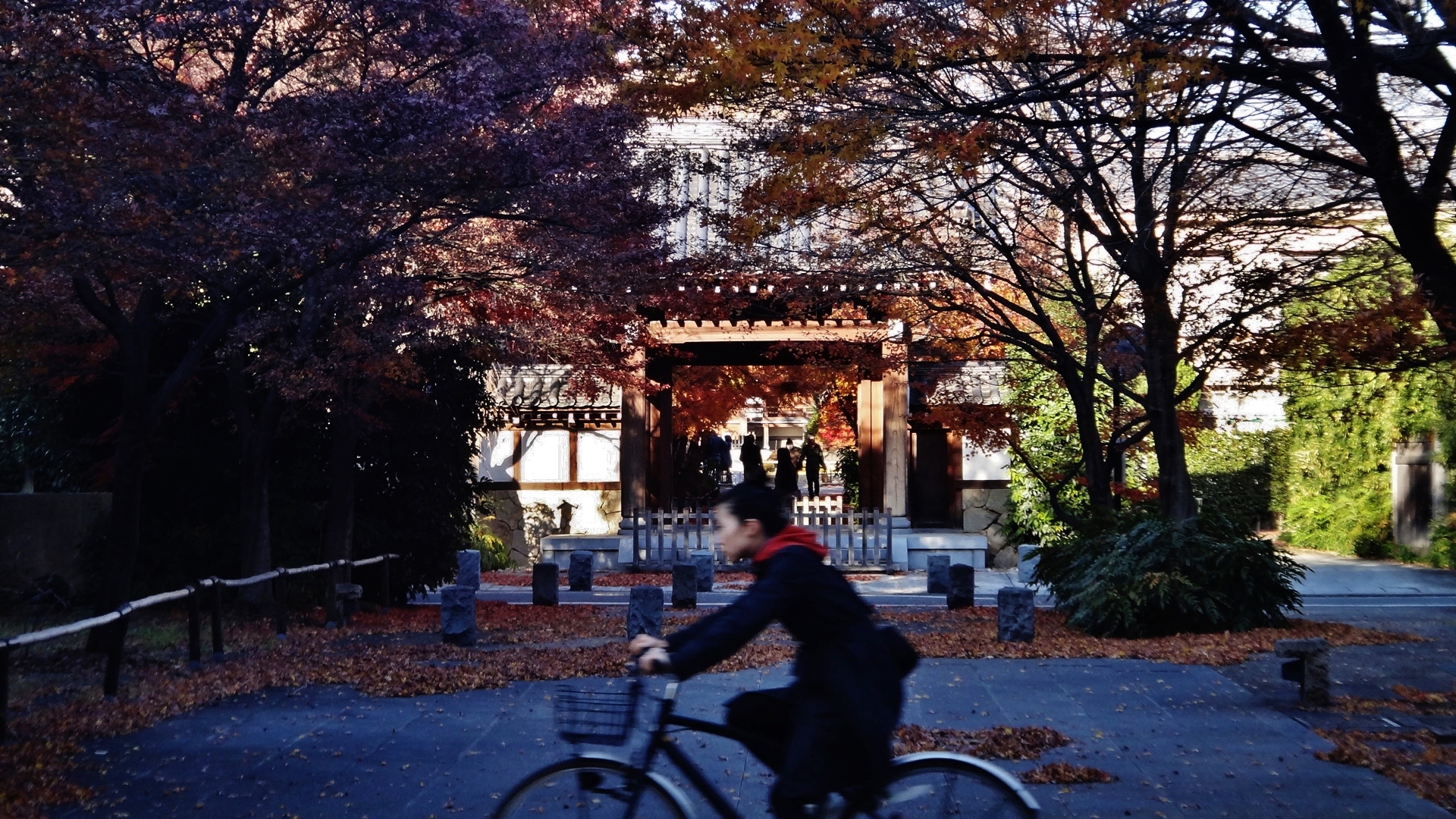

Kitasenju 北千住: recently I keep hearing this referred to as an ‘underrated’ and/or up-and-coming neighborhood. (See photo) Here, a skate park:
Kokubunji
Koto-ku 江東区: Land of canals and the small but interesting museums “Center of the Tokyo Raid and War Damages” and “Nakagawa Funabansho Barge Museum”
Kyobashi 京橋: Home of the National Film Center, this neighborhood just north of Ginza is quiet but exceptionally close to to Tokyo Station.
Marunouchi: upscale shopping and office towers near Tokyo Tower
Meguro 目黒: I can’t believe I still haven’t written anything about Meguro. Might as well put in a plug for the excellent Texas-themed bar, Little Texas リトルテキサス (map).
Mejiro 目白: upscale residential neighborhood on the Yamanote line, exemplified by Tokugawa Village, a semi-gated enclave, built in 1969, that attracts foreign residents:
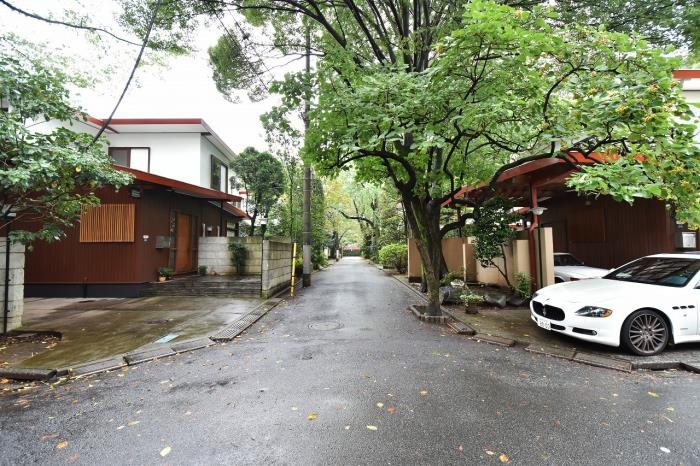
Midorigaoka 緑が丘 / Ookayama 大岡山: Home of one of the campuses of Tokyo Tech, home to an innovative building with 4,350 solar panels. Just south of Ookayama station is a killer view of Mt. Fuji (when the clouds don’t get in the way.)


Minami-Senju: somewhat gritttier section of Tokyo, home of the former Sanya district and close to Yoshiwara. This is also home to the terminus of the Toden Arakawa streetcar.
Nakameguro 中目黒: hipsters and a lovely stretch of the Meguro-gawa river.

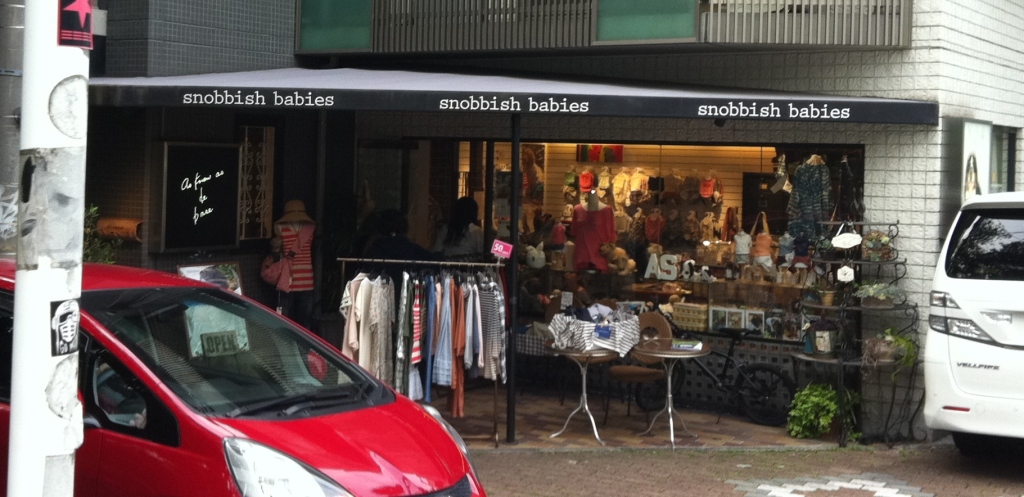
Nakano-Shimbashi 中野新橋: this small neighborhood on the outskirts of Shinjuku is dear to my heart because I bought a pillow from one of those old-fashioned pillow-and-bedding stores. With my purchase I received a free miniature Snickers candy. Also, a scene from the James Bond film, “You Only Live Twice” was filmed at the train station here:
Nezu 根津 (Bunkyo-ku): pleasant, old-school feeling. Probably a bit quiet at night. Convenient enough, though. Served by the Chiyoda line, which strikes me as a pleasant subway line.

Ochanomizu 御茶ノ水: Although this neighborhood somewhat bleeds into Jimbocho to its south, the spiritual center of this neighborhood can be pinned on Ochanomizu Bridge お茶の水橋, from which can be seen a glorious tangle of trains, bridges and canals. Ochanomizu is also home to a branch of the Naru Jazz Club.
Mizonokuchi arch bridge at Ochanomizu:
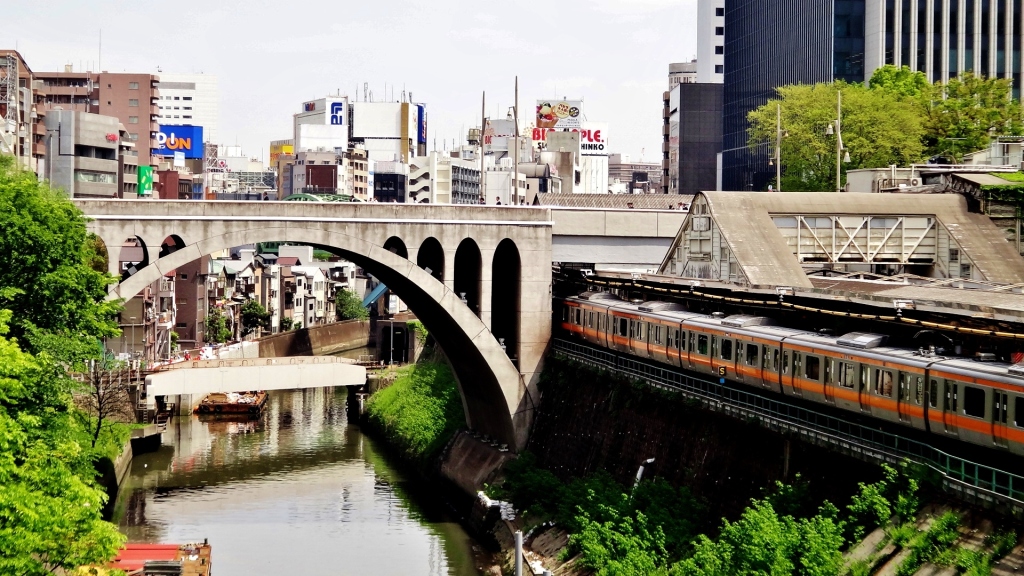
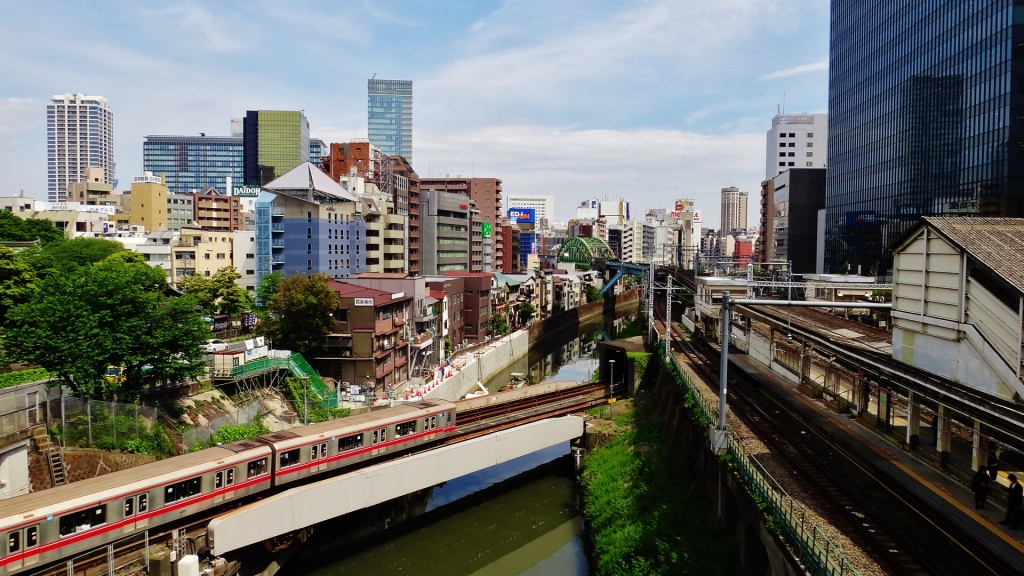
Myogadani 茗荷谷: home to a tucked-away hanami spot (Harimazaka 播磨坂さくら並木), with nearby botanical gardens.
Ochiai 落合: the heart of this area was formed in 1922 with the birth of Mejiro Bunkamura, a series of ‘cultural villages’ for the rich and/or Western-minded; see my article in Metropolis Magazine: IKEBUKURO’S BOHEMIAN GHOSTS: The former art colonies of Northwestern Tokyo.
Oimachi: a medium-sized station on the Tōhoku line that’s a nice mix of old and new Tokyo. Just south of the station is perhaps the widest fumikiri in Tokyo:

Oshiage 押上 / Sky Tree スカイツリー

Odaiba お台場: former repository for floating logs. A marvel of man-made land:
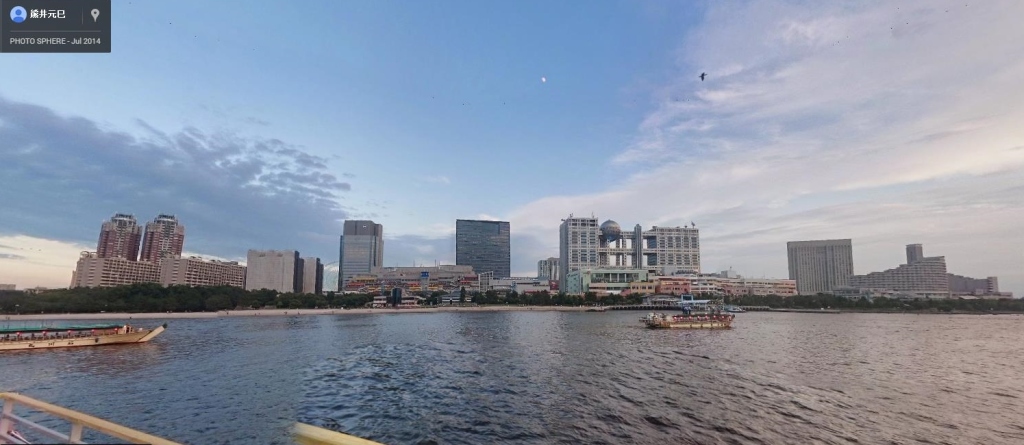

Ohashi 大橋: near Shibuya station, but with quiet areas along the Meguro river, and up on a hill; a highway runs through part of the neighborhood, but the highway interchange cleverly is hidden inside a building; see: Planting rice on the highway: Ohashi Green Junction


Oji 王子: the historic Otonashi bridge and a nice stretch of river near Otonashi Water Park 音無親水公園, popular for cherry blossom viewing. Also, home of the brilliant Rocco’s New York Style Pizza (map).
Omori 大森: situated not quite halfway between Tokyo Station and the main Kanagawa cities of Yokohama and Kawasaki Omori has a fair amount of development between the Omori Station (JR line) and Ōmorikaigan Station 大森海岸駅 (the oft-forgotten, by me, Keikyu Main Line). This area is not overwhelming probably because the lines are parallel, separated by about 1 kilometer.
Omotesando 表参道 / Harajuku 原宿: these neighborhoods are like sibling an older and younger sibling: inseparable and sometimes difficult to tell apart from each other. Omotesando is known for its tree-lined street (unusual for central Tokyo) and high-end fashion and cafes. A good date spot in Omotesando is Montoak, a funky restaurant/cafe, with three floors and a variety of seating options to fit your mood. (Montoak closed ~2022). The sidewalks are very crowded on weekends. Walk northwest from the Omotesando metro station towards JR Harajuku and there’s the younger sibling, Harajuku, known best for its Takeshita Street 竹下通り, which by now seems more well-known for being well-known than for anything else. Not far from here, to the west, is the peaceful and impressive Meiji Shrine. South from here, towards Shibuya, is Cat Street, a meandering pedestrian street with shopping and people-watching.
Osaki 大崎: Listed as one of the seven “secondary city centers” 副都心 (Fukutoshin) officially designated by the Tokyo Metropolis,” https://en.wikipedia.org/wiki/%C5%8Csaki,_Tokyo sourc, the Osaki station area feels very business-oriented, but is surprisingly relaxing after work; this is a footsal field next to the excellent pub: Footnik Osaki フットニック 大崎店 (map).
Otemachi: central business district immediately north and west of Tokyo Station
Roppongi: If you are an expat, you will know Roppongi. In addition to sleazy nightclubs and Nigerian(?) pimps, the Tokyo Midtown and Roppongi Hills shopping complexes are quite impressive. The Toho cinemas in Roppongi Hills is a great theater.
Sakurashinmachi 桜新町: Upscale, leafy suburb, within easy reach of Shibuya. See post: Sazae-san and Sakurashinmachi: Sunday Sanpo on the Nomikawa Green Road


Sangenjaya 三軒茶屋: This neighborhood has a young-ish vibe, like a smaller version of Shimo-Kitazawa; perhaps this is fitting, as the neighborhood’s name literally means “Three Tea Houses”. In addition to a Denentoshi Line stop, Sangenjaya is also served by the Tokyu Setagaya Line streetcar.
Sanya 山谷: this old, unofficial term, is the name for one of Tokyo’s most notoriously run-down areas. Sanya lies east of Yoshiwara, and comprises much of the Kiyokawa 清川 neighborhood.
Seijo /Seijogakuen-mae: upscale area; an early planned community for wealthy Tokyo-ites, similar to Denenchofu. The Seijo-Corty mall is one of my favorites for its airy atrium and low-key upscale vibe (and views of Mt. Fuji).

Sendagi 千駄木: perhaps the quietest and old neighborhood that forms the broader Yanesen district. (See: A quiet spot in Bunkyo-ku)

Shibamata 柴又: “deep Tokyo”, home to the fictional (and very famous) Tora-san movie character.
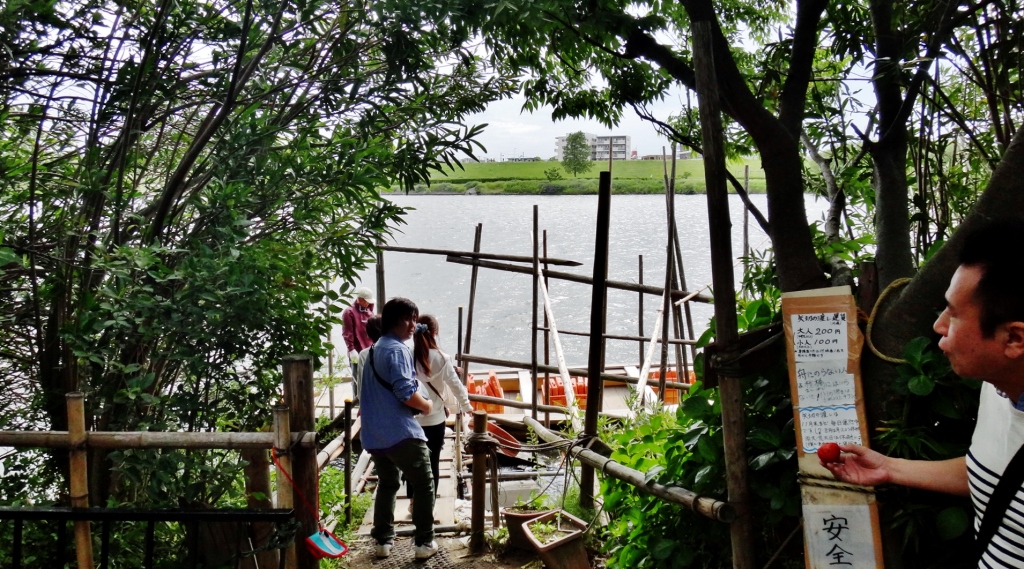

Shibuya: No trip to Tokyo is complete without visiting the heart of Shibuya and seeing the famous crossing, just outside Shibuya Station. Plus, there’s great people-watching opportunities around the statue of Hachikō the dog 忠犬ハチ公像, which is an iconic meeting spot.

Shimokitazawa 下北沢: There are a lot of restaurants in Shimokitazawa, as well as shopping. I think of it as the gateway to Shibuya, both for its proximity by train and for its youth culture. The neighborhood has undergone a lot of change recently, especially since the old train crossing (see pic below) was moved underground.
Back in the day any visit to this neighborhood meant a stop at Ushi-Tora, a great beer bar located at 2丁目-9−3 Kitazawa, Setagaya, Tokyo.There are actually two Ushi-Tora bars, both on the 2nd floor of the same building. Check both out as I think the beer selection is different. I believe the bar has since moved or perhaps closed.
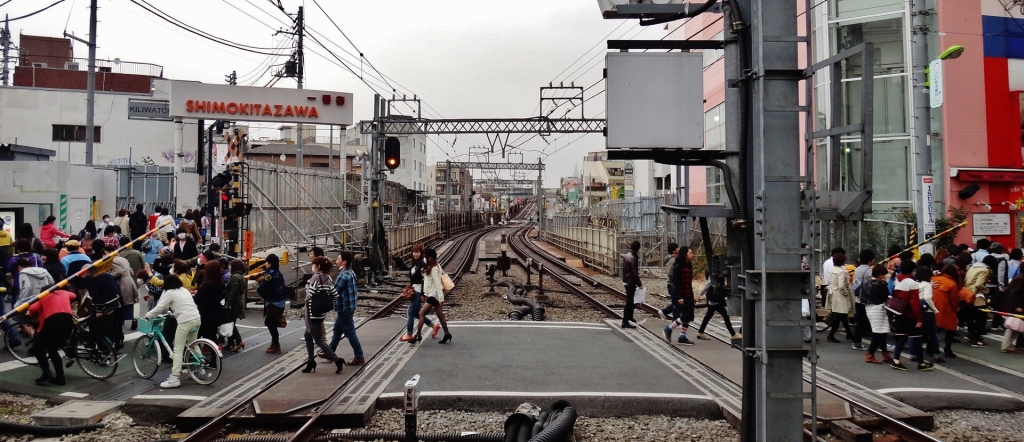
Shin-Okubo 新大久保: concentration of Korean residents in Tokyo (profile)
Senzoku: very quiet, residential area.
Senzokuike: home to the lovely Senzokuike pond, the source of one of the more pleasant bodies of water in Tokyo: the Senzoku Nagare stream 洗足流れ. Residential feel, not too fancy, but very pleasant.

Shinagawa Station: a station district. Some hotels and shopping. Not too interesting, except for this… (Note: this tunnel has been subsequently replaced due to the development of Takanawa Gateway 高輪ゲート station, just north of Shinagawa Station.)

Shinbashi 新橋 / Shimbashi: the Shinbashi neighborhood has an old-school after-work salaryman feel and is located to the west of the station. Scenes from a summer festival:

Shinjuku 新宿: A city of its own with many faces, such as Kabukicho and Golden Gai. Kabukicho’s rough image has softened over the years due to redevelopment such as the Shinjuku Toho Building with its playful rooftop Godzilla on rooftop (map).

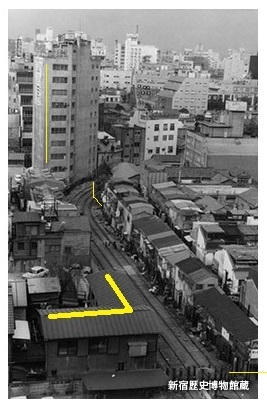
Sugamo 巣鴨: Jizo Dori Shopping Street 巣鴨地蔵通り商店街 (map), northwest of the Sugamo station, is widely known as “hot spot” for old people; I was disappointed not to see more 80-year olds when I visited this neighborhood. Alas, it was raining.

Tabata 田端: this nearborhood, wedged between to Yamanote Line stations, (Komagome & Tabata), carries a strong scent of the past especially with its Tabata Ginza shopping district 「田端銀座商店街」:
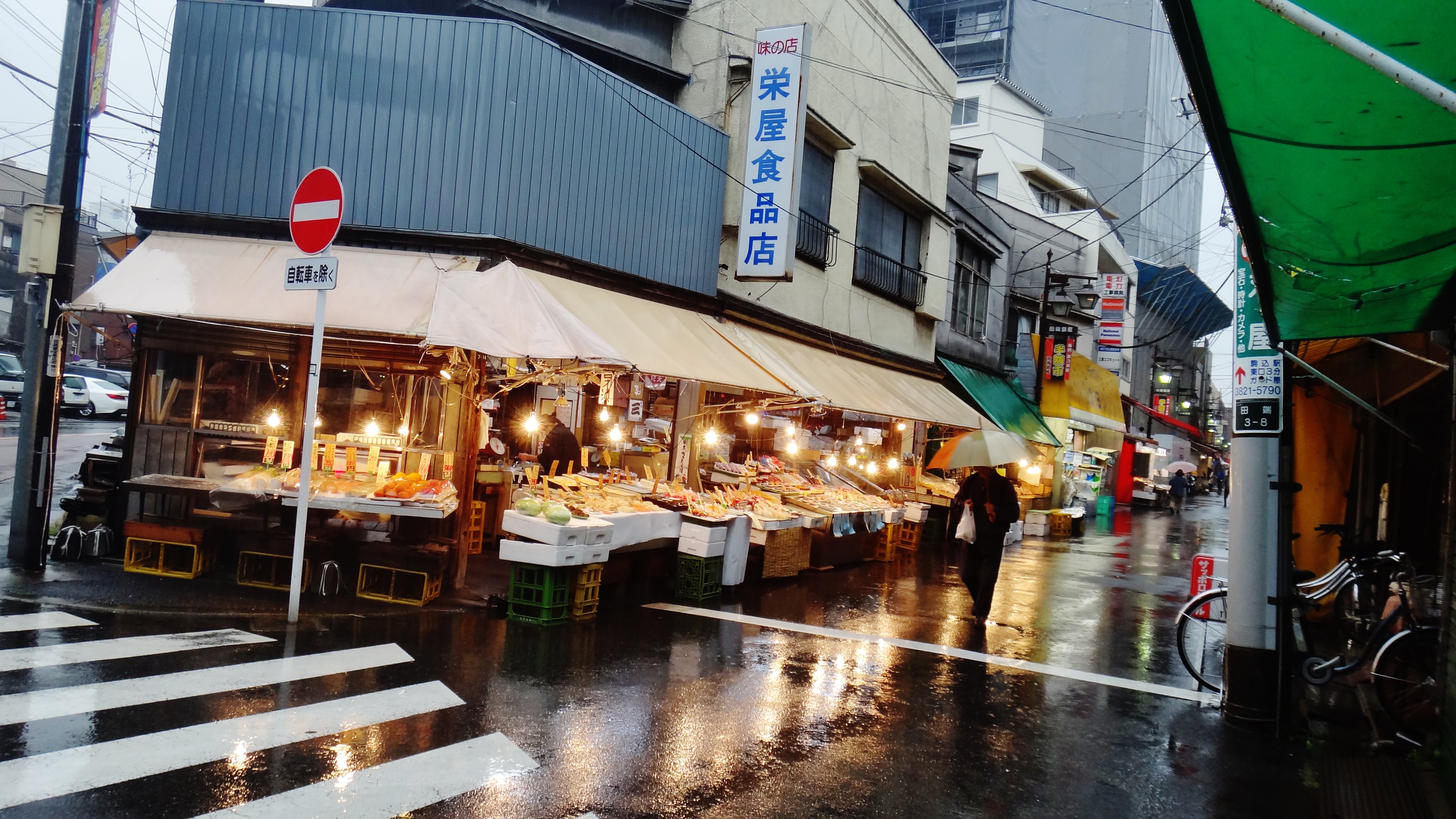
Tokyo Station / Marunouchi / Otemachi: If Tokyo has a center, this is it.

Takadanobaba: Lively student-oriented area on the Yamonote line:

Todoroki 等々力: home to a short but wondrous gorge, the Todoroki Ravine Park 等々力渓谷公園.
Tokiwadai 常盤台: residential area close to Ikebukuro Station; an early version of a ‘garden city‘

Tomigaya 富ヶ谷 / Kamiyamacho 神山町: a relatively subdued, yet trendy enclave north of Shibuya station, west of Yoyogi park and east of Yoyogi-Uehara. Served by Yoyogi-Hachiman Station 代々木八幡駅 and Yoyogikoen Station 代々木公園駅. Tomigaya and Kamiyamacho are adjacent/ overlapping areas that are relatively interchangeable terms when describing this area of the city. See: An Unassuming Tokyo Enclave Is Having Its Moment (New York Times) and Area Guide: Taking It Easy in Tomigaya (Tokyo Weekender).
Toyosu: reclaimed land, new site of the former Tsukiji Fish Market; not much of a neighborhood feel; big roads and large lots (report)
Tsukishima 月島: famous for its monjayaki street, this is a great neighborhood for tourists who want to go “off the beaten path” while actually being quite close to the heart of central Tokyo (the shopping street is also home to a vast collection of kanban kenchiku storefronts); see: Tsukishima 月島.
Tsukudajima 佃島 / Tsukuda 佃: former fishing village, now a neat pocket of the past close to the heart of modern Tokyo, and a neighbor of Tsukishima; see A fishing village, then a Sky Tree mystery
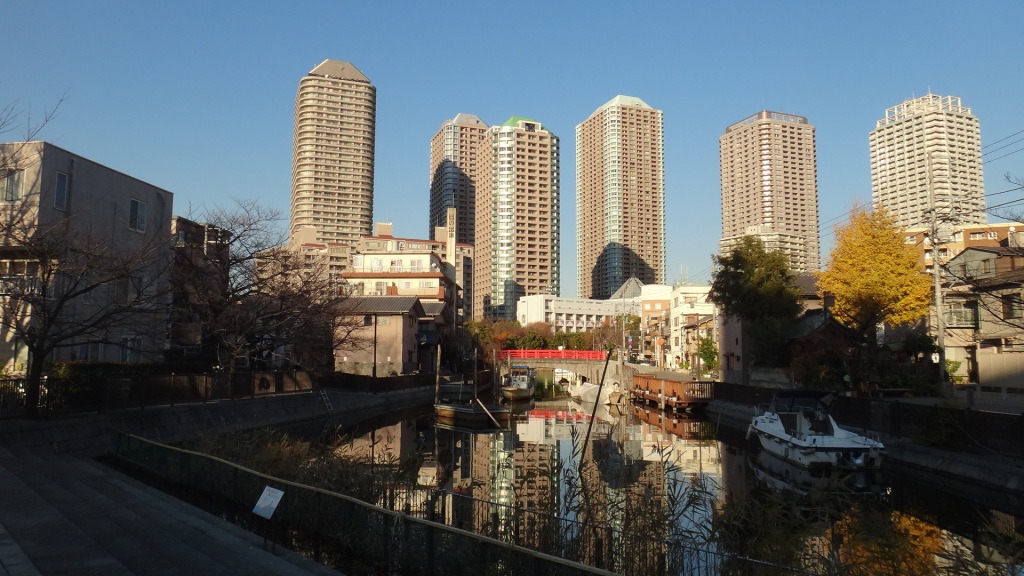

Ueno / Okachimachi: Museums and the Ueno zoo. Just south of Ueno is Okachimachi, home to a busy shopping street with a slightly black market feel, and black market prices, but I think it’s all legit. Seen below is Shinobazu Pond 不忍池.

Uguisudani 鶯谷 (Taito-ku): Uguisudani station is fairly conveniently located on the JR Yamanote line, but the neighborhood is not very “high rent”. Lots of love hotels, rough around the edges. This neighborhood is a bit of a no-man’s land as it is wedged between a cemetery and the Joetsu shinkansen tracks.
Wadabori Park: this, strictly speaking, isn’t a neighborhood, but is a park that sits on a bend of the Zenpukijigawa river; the various neighborhoods that line this river are blessed with a wonderful natural setting. Neighborhoods include: Matsunoki 松ノ木, Narita-nishi 成田西, Narita-higashi 成田東, and Omiya 大宮.

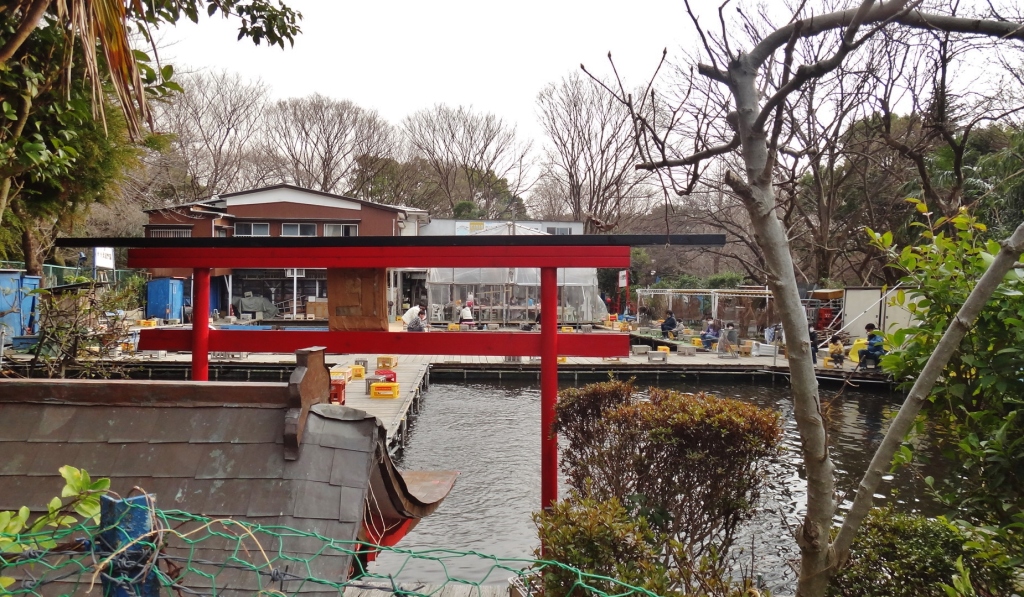
Waseda: Waseda University
Yanaka: lovely cemetery, stately buildings, quaint shotengai shopping street, and one of the three neighborhoods that comprise the broader Yanesen district

Yanesen 谷根千: adjoining neighborhood known for quiet streets and old houses; comprises Yanaka 谷中, Nezu 根津, Sendagi 千駄木.
Snake street, the central thoroughfare of Yanese:

Yoshiwara: No longer an official geographic designation, this old bordello district is now a red-light “soapland” area; not far from the touristy Asakusa area

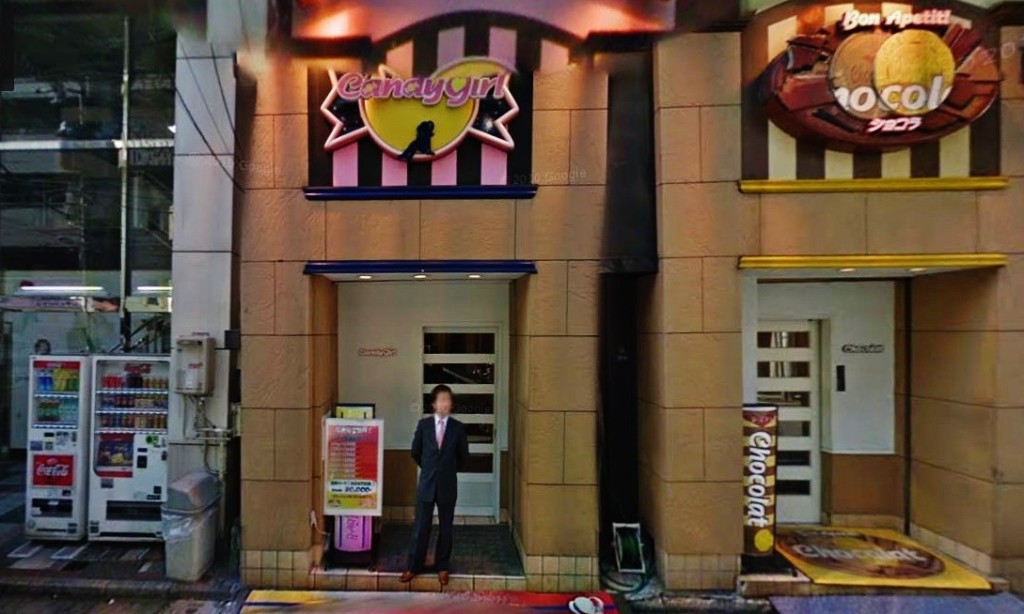
Yotsuya Station: there’s a spacious, open feel to this area, as the train station is built on top of a former moat/canal; overlooking the station is the magical Yotsuya promenade 「玉川上水・内藤新宿分水散歩道」 (see: Wisdom on the hill 山の上の上智: 1955, 2013)
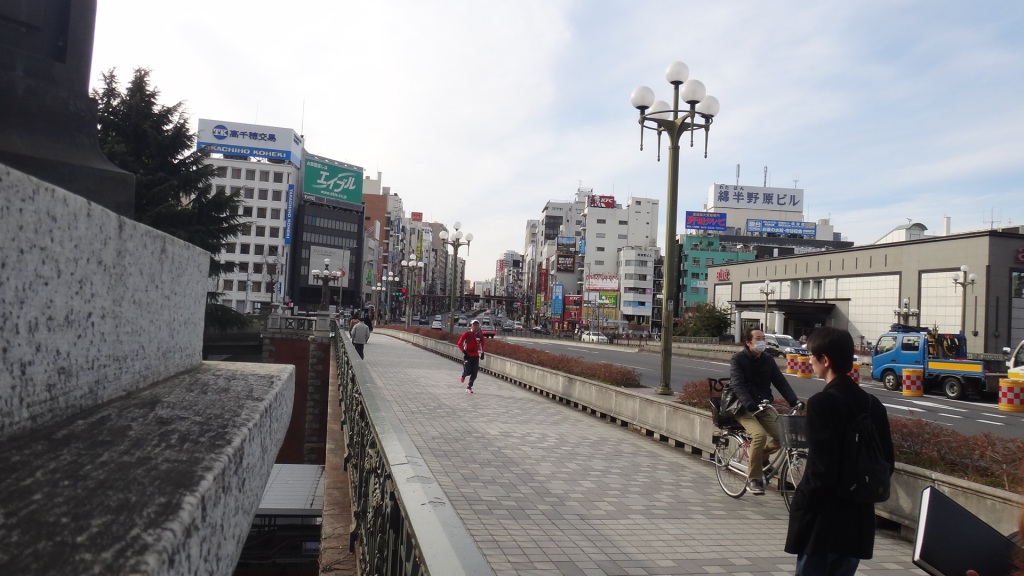
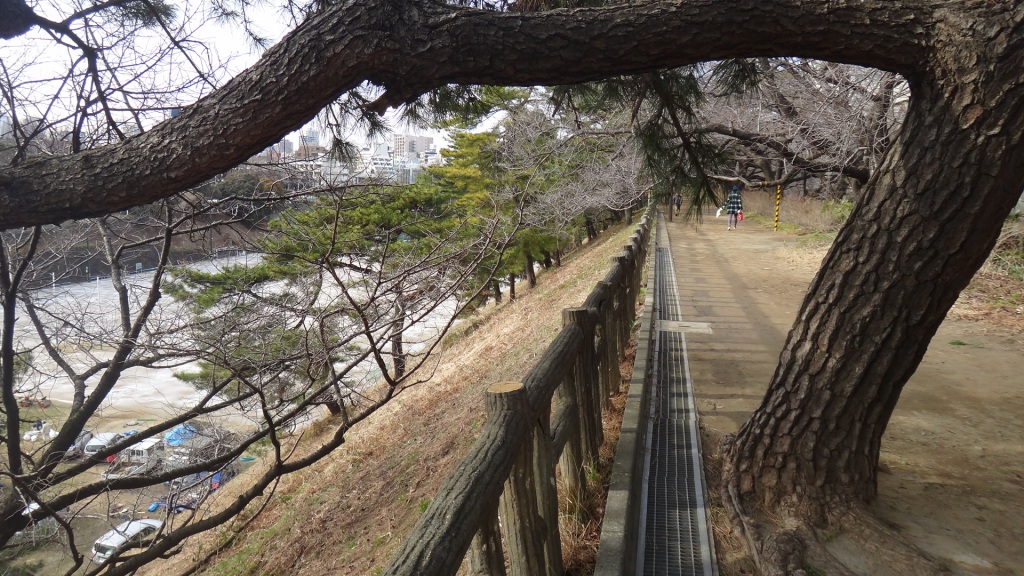
Yoyogi Station: although close to Shinjuku Station, this area has an intimate feel. There’s a cool railroad tunnel, and a nice jazz club, NARU.
Yurakucho 有楽町: Perhaps no better spot to get the “feel” of Tokyo…it’s the heart of the city. An easy walk to Ginza, Hibiya, the Imperial Palace, Tokyo Station, Marunouchi, Shimbashi…

Near TOKYO
Kawasaki: Former (and still currently, in many areas) the heavily industrial neighbor across the Tamagawa from Tokyo. The border station of Shinmaruko / Musashikosugi looms like an independent city across the river from flood-zone baseball fields. The coastline of Kawasaki is still heavily occupied by factories and refineries. See: How to get to the Kawasaki industrial zone

- Ikuta Station 生田駅: within Kawasaki, setting of the TV version of “Welcome to the NHK“
- Mizonokuchi 溝の口: just the right feeling of lively and off-the-beaten-path, as seen here:

- Yokohama 横浜: Wonderful walking opportunities in this port city, with a lively Chinatown and cool hillside that used to be home to one of Japan’s first foreigner settlements.

- Tomioka: a hidden grove of trees and woods and trees surrounded by city, in Kanagawa Prefecture, south of Yokohama.

Saitama Prefecture: Tokyo’s neighbor to the north, home to a variety of scenery, from the border town of Kawaguchi 川口, to the beautiful hiking trails on the Seibu Chichibu line, and the old-Edo (Tokyo) feel of Kawagoe 川越, to the mega-urban renewal of the Saitama Super Arena and its adjacent Saitama Sky Forest.


How about Azabujuban?
Hi Clark!
Really nice post. I also write a lot about Japan. Please check out my blog for new article ideas! Hope we can keep in touch!
Zelli
Awesome!. Too much to see yet, can’t wait t go back there!
Thanks for your posts!
saludos